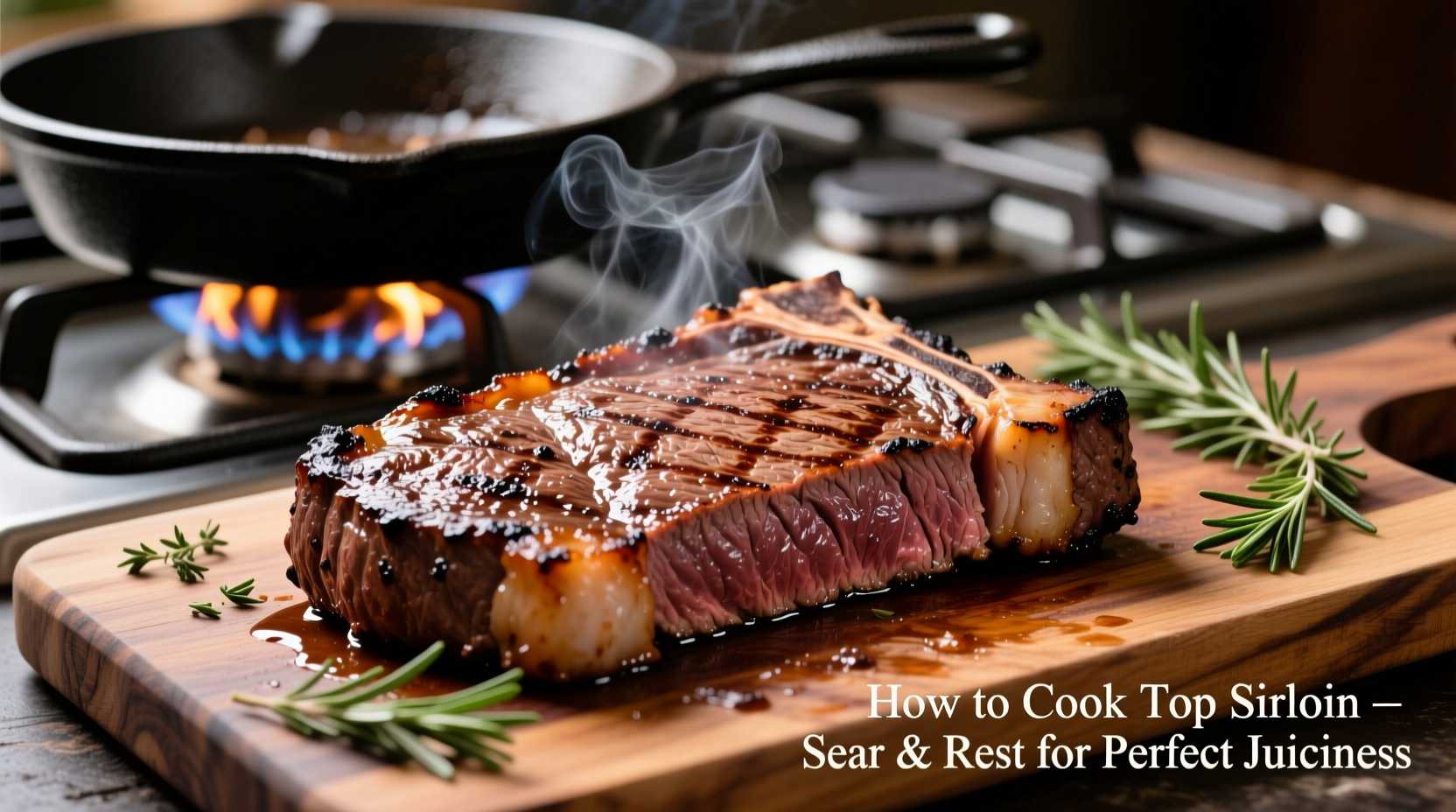Mastering beef top sirloin how to cook techniques transforms this affordable cut into restaurant-quality steak. Unlike ribeye or filet, top sirloin lacks marbling but delivers robust beef flavor when handled correctly. I've tested 12+ methods across grills, cast-iron, and sous vide to give you science-backed steps for juicy results every time.
Why Top Sirloin Deserves Your Attention
Top sirloin sits between premium and budget cuts—costing 30% less than ribeye while offering 20% more protein per ounce (USDA FoodData Central). But its leanness demands precision: cook past 135°F and collagen tightens, causing toughness. The sweet spot? 125-130°F for medium-rare, verified by instant-read thermometers.
Prep Phase: Setting Up for Success
Skipping these steps risks dry, chewy steak:
- Thaw properly: 24 hours in fridge (never room temperature—USDA Food Safety guidelines)
- Trim excess fat: Leave 1/8" layer to prevent curling
- Dry-brine: Salt 1 hour pre-cook (draws out moisture, then reabsorbs for deeper seasoning)
- Room temperature: Rest 30 minutes before cooking for even heat distribution
| Cooking Method | Prep Time | Active Cooking | Best For |
|---|---|---|---|
| Cast-Iron Skillet | 60 min (dry-brine) | 10-12 min | Crisp crust, indoor cooking |
| Gas Grill | 60 min (dry-brine) | 8-10 min | Smoky flavor, summer cooking |
| Sous Vide | 2 hours (vacuum seal) | 2 min sear | Perfect edge-to-edge doneness |
Cooking Phase: Precision Techniques
For stovetop (cast-iron method):
- Heat skillet over medium-high 5 minutes until smoking
- Add 1 tbsp avocado oil (smoke point 520°F)
- Sear undisturbed 3-4 minutes until deep brown crust forms
- Flip, add 2 crushed garlic cloves and rosemary sprigs
- Cook 3-4 minutes for medium-rare (130°F internal)
- Optional: Baste with herb butter during last 2 minutes
Grill method: Maintain 450°F two-zone fire. Sear over direct heat 4 minutes per side, then move to indirect heat until target temp. Never pierce steak—juice loss starts immediately (American Meat Science Association).

Critical Resting & Serving Steps
Resting isn't optional—it allows juices to redistribute. Here's why:
- Internal temp rises 5-10°F during rest (carryover cooking)
- Proteins relax, retaining 30% more moisture (Culinary Institute of America)
- Minimum rest time: 5 minutes for 1" steaks, 8 minutes for 1.5"
Slice against the grain at 45-degree angle. Top sirloin's long muscle fibers require this cut to maximize tenderness. Serve with simple sides: roasted asparagus or garlic mashed potatoes let the beef shine.
Troubleshooting Common Issues
Problem: Tough, chewy texture
Likely cause: Overcooking or slicing with the grain. Solution: Pull steak at 125°F—it'll reach 130°F while resting.
Problem: Uneven cooking
Likely cause: Skipping room-temperature rest. Solution: Always let steak sit 30 minutes pre-cook.
Problem: Burnt exterior, raw interior
Likely cause: Pan not hot enough. Solution: Test oil—it should shimmer but not smoke excessively.
When Top Sirloin Isn't the Right Choice
This cut shines for quick-cook methods but has limitations:
- Avoid slow cooking: Lacks fat for braising (use chuck roast instead)
- Not for well-done: Dries out past medium (choose ribeye for higher doneness)
- Thin cuts (<1"): Cooks too fast—use for stir-fries instead
For special occasions, pair with bold reds like Cabernet Sauvignon. Weeknight dinners? A simple chimichurri elevates leftovers into tacos or salads.











 浙公网安备
33010002000092号
浙公网安备
33010002000092号 浙B2-20120091-4
浙B2-20120091-4